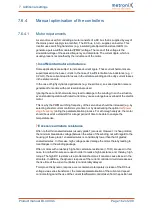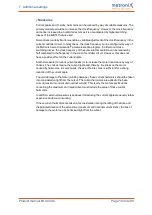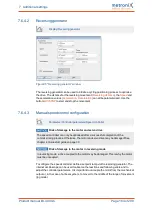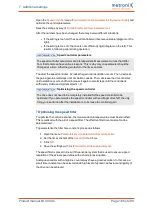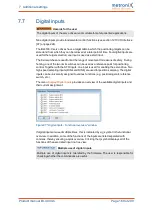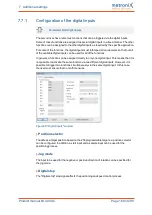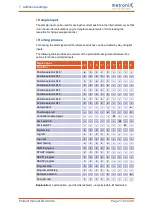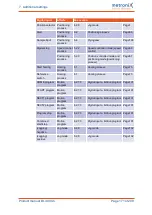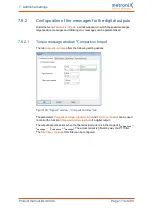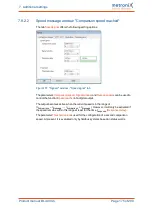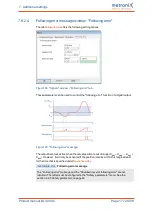
7 Additional settings
7.6.4
Manual optimisation of the controllers
7.6.4.1
Motor requirements
A servo drive used for controlling a motor consists of a DC bus that is supplied by way of
the mains power supply (via a rectifier). The DC bus, in turn, supplies an inverter. This
inverter uses switching transistors (e.g. insulated gate bipolar transistors, IGBTs) to
generate a pulse-width-modulated (PMW) voltage. The mean of this voltage is the
sinusoidal voltage of the desired frequency and amplitude. The current ripple, which is
usually present, is smoothed by the inductance of the motor.
Insufficient armature inductance
Some applications are subject to increased current ripple. These current harmonics are
superimposed on the base current. In the case of insufficient armature inductance (e.g. <
0.2 mH), these currents lead to losses in the armature winding and to eddy-current losses
in the stator iron core.
In the case of highly dynamic applications (e.g. linear drives), so-called position noise is
generated if encoders with poor resolution are used.
Ignoring these current harmonics may lead to damage to the winding. In such a situation,
even standard operation with rated current may cause a dangerous overload of the electric
motor.
This is why the PWM switching frequency of the servo drive should be increased (e.g. by
selecting a faster current controller cycle time t
i
or by deactivating the option
Half power
stage frequency
) during the parameterisation process. For a thorough analysis, the motor
should be used at a standstill for a longer period of time to be able to analyse the
temperature rise.
Excessive armature resistance
Often, rather thin enamelled wires (usually grade 1) are used. However, in cheap motors,
the minimum breakdown voltage (between the wires of the winding, not with regard to the
housing) of these grade 1 enamelled wires is considerably lower than that of grade 2
enamelled wires. In this case, high voltage peaks damage the motor, thereby leading to
local bridges in the winding package.
Often, motors with a relatively high ohmic armature resistance (> 10 Ω) are used. In this
case, too, rather thin wires are used in order to realise high inductance and, thereby, high
torque. The high DC resistance is a problematic factor as it can also cause losses in the
armature. In addition, the dynamic response of the current controller circuit decreases as
the rise time of the current controller is considerably delayed.
To improve the dynamic response, we recommend a temporary increase of the DC bus
voltage via a series transformer, the manual parameterisation of the current and speed
control settings and the use of the current feedforward control taken from the position set.
Product manual BL 4000-C
Page 162 of 298















